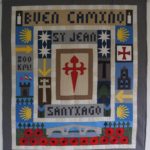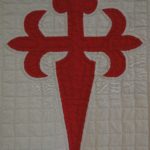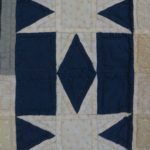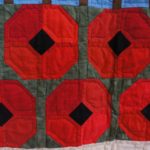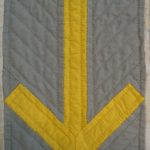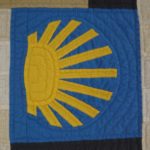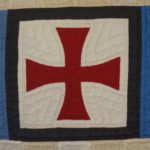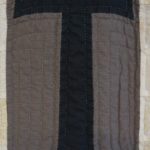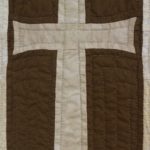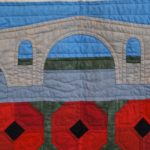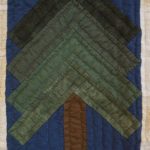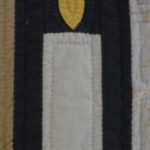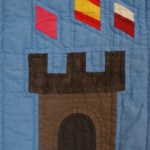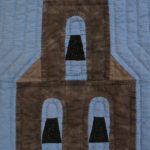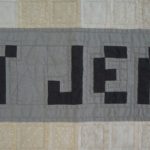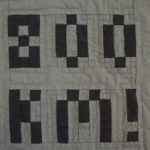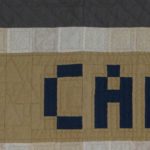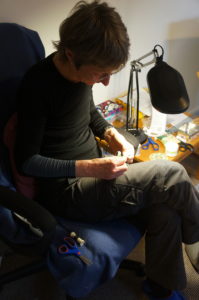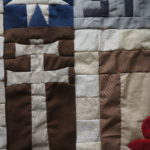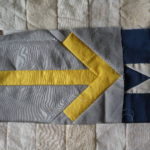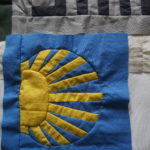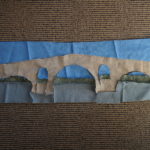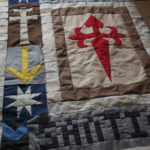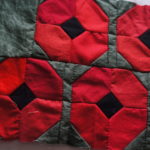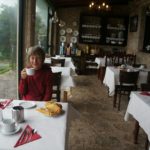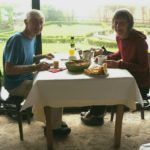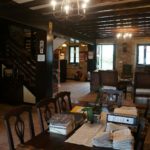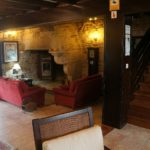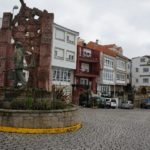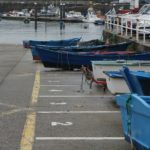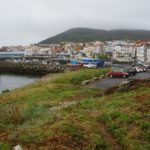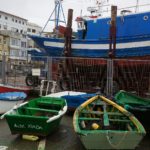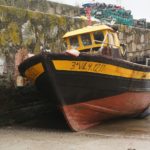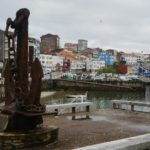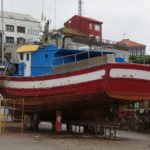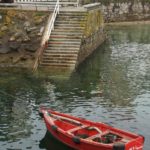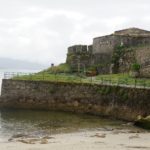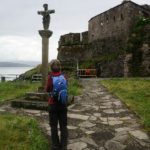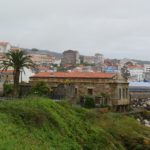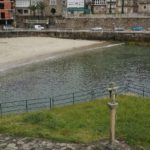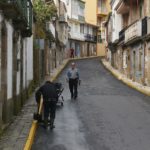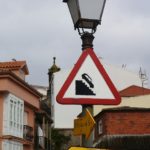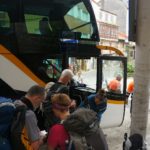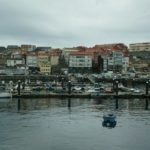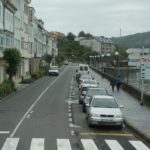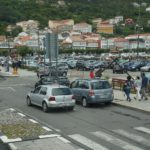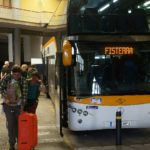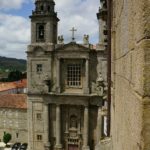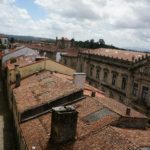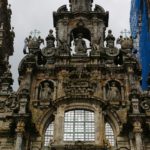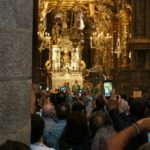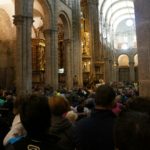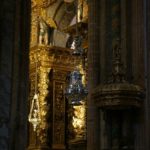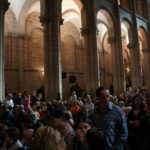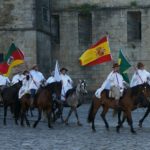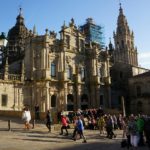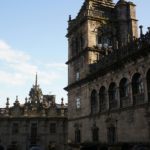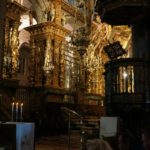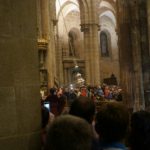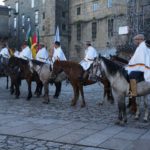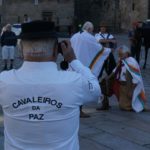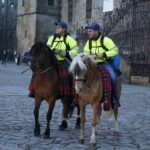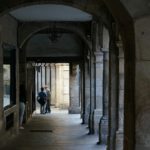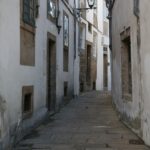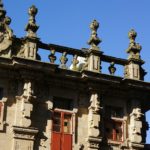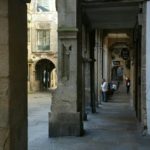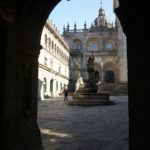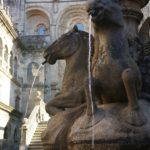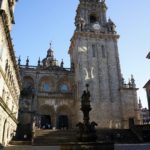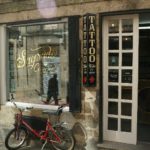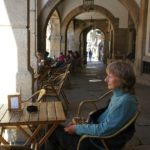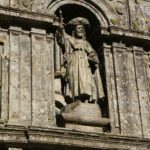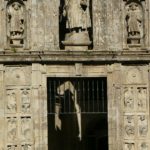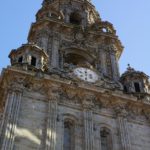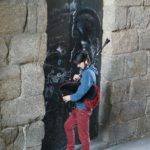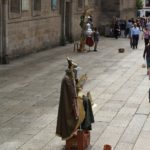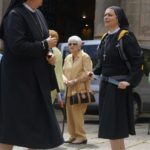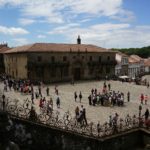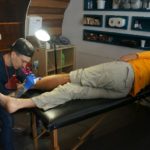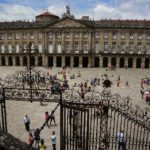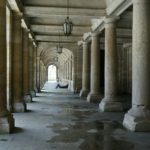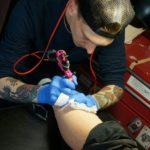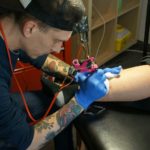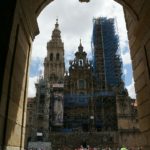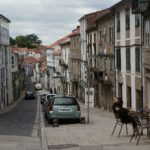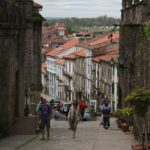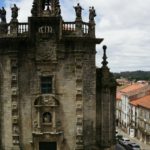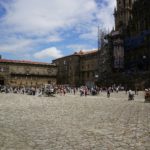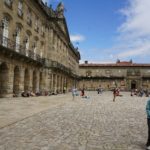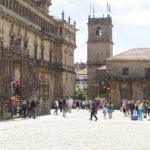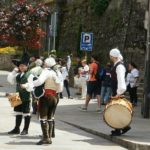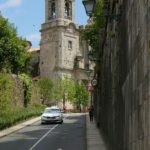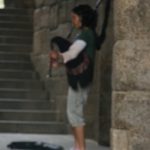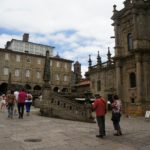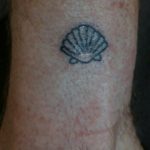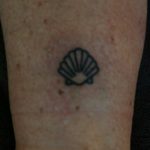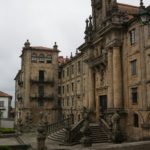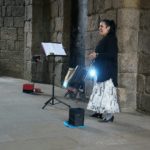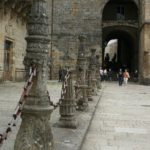Basically there don’t seem to be any public conveniences in Spain, at least not on the camino. We saw two in 800kms. It does seem to be acceptable to use the facilities in cafes, bars etc. Only in the last 100km from Sarria did we see signs saying toilets were for customers only, and then there was often a €1 fee for non customers. We used cafes but always bought something, a coffee, some fruit, chocolate bar etc. It makes it easier if you can train your bladder and bowels to use the facilities at your overnight accommodation.
Obviously people get caught short and so you have to go in the bushes. Easier for the guys. The path and picnic areas etc are often littered with toilet paper/tissue which is not a good look. Either bury it or carry it out. Swot up on the book “How to shit in the woods” before starting the Camino. Be prepared also for different cultures having different levels of privacy accepted for relieving yourself.
There is also a surprising amount of litter on the path. Plastic bottles, wrappers, juice packets etc. There are very few rubbish bins provided so you have to carry your litter out. Some pilgrims (usually Canadians) pick up litter as they go. In the villages, towns and cities there is no house to house refuse collection. Each street will have large plastic rubbish containers for waste and recycling and people bring their household rubbish /waste to these. It is so easy to use these to dispose of your rubbish.
Infrastructure
Walking the Camino is not tramping in the wilderness. It is a walk through rural and urban Spain. Spain is a sophisticated European nation and so all the infrastructure you would expect is available pretty much all the time. Every village will have a pharmacy, towns will have medical centres, doctors and dentists. Large towns and cities have hospitals. They are experienced in all the ailments that afflict pilgrims and are well used to people walking in off the street and saying “I have a problem”. You don’t have to carry vast supplies of plasters, knee bandages, antiinflams, creams, etc. You can restock as you go.
Outfitter shops are available in large villages and towns. Shoes, boots, sandals, socks, back packs, day packs, everything you could want. They have the most hi-tec socks I have ever seen and a very popular super soft soled sandal that some of our friends with blisters bought. Sim cards, batteries, chargers, new phones, cameras etc all readily purchasable.
Transport is also available, either buses or taxis. There seems to be good bus services between towns and around cities. Taxis are available everywhere. Just go into any cafe, bar, albergue, hotel and ask. The rate seemed to be €1 per kilometre. We knew people who were injured but their partner was still walking so they used a taxi so they could meet up each night. Another guy did the same with a rental car. Some people use the local bus to get in and out of the large cities. People with knee problems might use a taxi to get over the steepest hills, or walk half a day and then taxi.
There are companies everywhere that will transfer packs, bags etc. If you are carrying all your own gear but get injured or tired it is easy to arrange transfers at hotels or albergues. The state owned post office (Correos) also have a good, well used service.
Internet coverage is excellent, wifi (pronounced weefee) is free and available in pretty much all cafes, bars, hotels, albergues etc. We had only one hotel in a remote location that had no wifi. About 3 hotels where the service was weak or intermittent. Sometimes it is only usable in public areas of a hotel.
Weather
Everyone who researches the Camino Frances will hear stories of snow and sleet on the Pyrenees, nine days of forty degree temperatures on the meseta, thirteen days of continuous rain and cold in Galicia. Well, that was not for us. We had 34 days walking in a lovely Spanish spring. Four days on which we used our ponchos. Only for about an hour or two in light drizzle each time. One day with a strong cold wind for a couple of hours. Five days when it got a bit hot for us after midday. Otherwise it was ideal weather for walking. Nice crisp mornings, very little wind and sunny days. The only really wet day was down in Finisterre after we had finished.
Food
Although we missed our oatmeal the food in northern Spain is delicious. It is a very fertile area so there is always plenty of fresh vegetables and fruit. And of course it is world renowned for its wine. The food, like pretty much everything else, is cheap compared to NZ. Wine is from €1.95 a bottle. The standard evening meal is the “Peregrino Menu” which is available at every cafe, restaurant, hotel, and costs from €8.90 to €14. It consists of a starter, main course, dessert, bottle of wine, water, bread and sometimes coffee. The starter, main and dessert will each have about six options and vary a bit depending on the specialities of different regions.
Starters could be: mixed salad, russian salad, pasta salad, lasagne, lentil soup, galician broth, gazpacho, spaghetti bolognaise.
Mains could be: roast chicken, grilled veal, beef or pork, pork chop, paella, regional casserole, whole grilled fish (hake or trout), octopus. All with chips – no salad or vegetables with the main course.
Desserts could be: flan, rice pudding, yoghurt, ice cream, fruit (one piece eg kiwi fruit or orange), santiago cake (made with ground almonds).
It can be as fast or as slow as you like. Done and dusted in three quarters of an hour, or spread over two or three hours Spanish style. If you don’t want the peregrino menu there is usually an a la carte menu with a much larger selection of many speciality dishes.
Breakfast can be as basic as coffee, juice, bread and jam. Most places will also have cold ham and cheese and yoghurt. Bigger hotels will have croissants, fruit, cakes and occasionally scrambled eggs and bacon.
Lunch can be bocadillo (sandwich with cheese/ham), tortilla (potato and egg omelette), or empanada (bread type pastry with meat/ vegetable/fish filling). Every village also has a supermarket with everything you would expect. Chocolate is incredibly cheap, €1 for a large cake. You could live very cheaply on wine and chocolate. But not lose much weight.
Accommodation
I wrote about albergues in an early post so won’t say much about these. There are hundreds of them, varying widely in size, facilities, rules, etc. We only saw a few that were “completo”, full. In the summer the popular ones fill quickly.
We used a softer option. Prebooked, prepaid, three star hotels. These were booked by Caminoways who also arranged bag transfer each day. The hotels were excellent with a wide variety ranging from family run country cottages, intimate little hotels in small towns and villages, luxury rooms in monasteries, typical chain hotels in large cities. All had great facilities, most had breakfast, dinner and good free wifi available. Spain does hospitality very well.
Language
The language of the Camino Frances is English. It is possible to walk the entire 800km without using a single word of Spanish or French. But that’s not much fun and not very polite. The Spanish are very friendly and helpful, even more so when you make an effort to use their language. When in Rome do as the Romans and all that. At least learn some basic conversational phrases to order food etc and the best communication is always a smile. Attempt to speak some Spanish and two things may happen. First they will respond in English. They are just as keen to practice their English as you are your Spanish. An interesting conversation is you speaking basic Spanish and they speaking basic English. The second is they will respond in a torrent of high speed Spanish. You will stare at them like a stunned mullet. They will realise you know less Spanish than their two year old child and change to English or speak in slow simple Spanish with hand gestures. You will usually be with your new pilgrim friends and by combining knowledge you get by. Other pilgrims who can speak several languages will gladly help you out. If you do know some Spanish and love languages you will have a ball. Every day you can practice and improve. There are heaps of fellow pilgrims to talk with if you know some Italian, German, French etc.

